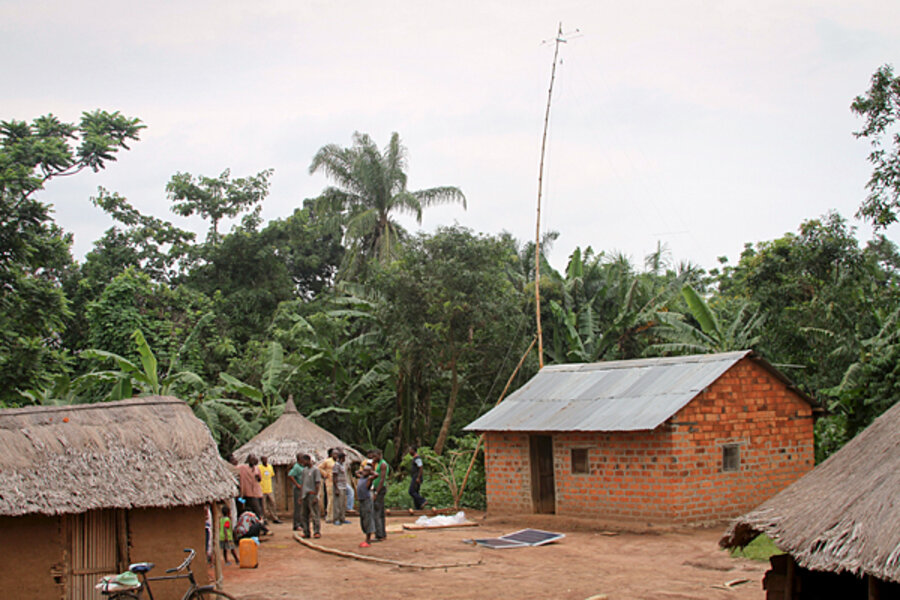Crisis mapping: How Invisible Children's Kony 2012 campaign changed advocacy
Loading...
| Nairobi, Kenya
* This post originally appeared on Patrick Meier's tech blog, irevolution.net, on Sept. 29, 2011. The Monitor has reposted it with permission of the author.
My colleagues at Resolve and Invisible Children have just launched their very impressive Crisis Map of LRA Attacks in Central Africa. The LRA, or Lord’s Resistance Army, is a brutal rebel group responsible for widespread mass atrocities, most of which go completely unreported because the killings and kidnappings happen in remote areas. This crisis map has been a long time in the making so I want to sincerely congratulate Michael Poffenberger, Sean Poole, Adam Finck, Kenneth Transier, and the entire team for the stellar job they’ve done with this project. The LRA Crisis Tracker is an important milestone for the fields of crisis mapping and early warning.
See the LRA Crisis Tracker here.
The Crisis Tracker team did an excellent job putting together a detailed code book (PDF) for this crisis map, a critical piece of any crisis mapping and conflict early-warning project that is all too often ignored or rushed by most. The reports mapped on Crisis Tracker come from Invisible Children’s local Early Warning Radio Network, UN agencies, and local NGOs. Invisible Children’s radio network also provides local communities with the ability to receive warnings of LRA activity and alert local security forces to LRA violence.
When I sat down with Resolve’s Kenneth Transier earlier this month [September 2011], he noted that the majority of the reports depicted on their LRA crisis map represent new and original information. He also noted that they currently have 22 months of solid data, with historical and real-time data entry ongoing. You can download the data here. Note that the public version of this data does not include the most sensitive information for security reasons.
The Crisis Tracker team also provide monthly and quarterly security briefs, analyzing the latest data they’ve collected for trends and patterns. This project is by far the most accurate, up-to-date, and comprehensive source of information on LRA atrocities, which the partners hope will improve efforts to protect vulnerable communities in the region. Indeed, the team has joined forces with a number of community-run protection organizations in Central Africa who hope to benefit from the team’s regular crisis reports.
The project is also innovative because of the technology being used. Michael got in touch about a year ago to learn more about the Ushahidi platform and after a series of conversations decided that they needed more features than were currently available from Ushahidi, especially on the data visualization side. So I put them in touch with my colleagues at Development Seed. Ultimately, the team partnered with a company called Digitaria which used the back end of a Sales-force platform and a customized content management system to publish the information to the crisis map. This an important contribution to the field of crisis mapping and I do hope that Digitaria share their technology with other groups. Indeed, the fact that new crisis-mapping technologies are surfacing is a healthy sign that the field is maturing and evolving.
In the meantime, I’m speaking with Michael about next steps on the conflict early warning and especially response side. This project has the potential to become a successful people-centered conflict early-response initiative as long as the team focuses seriously on conflict preparedness and implements a number of other best practices from fourth-generation conflict early warning systems.
This project is definitely worth keeping an eye on. I’ve invited Crisis Tracker to present at the 2011 International Conference of Crisis Mappers in Geneva in November (ICCM 2011). I do hope they’ll be able to participate. In the meantime, you can follow the team and their updates via Twitter at @crisistracker. The Crisis Tracker iPhone and iPad apps and should be out soon.
* Patrick Meier is an internationally recognized thought leader on the application of new technologies for crisis early warning, humanitarian response, human rights and civil resistance. He currently serves as Director of Crisis Mapping at Ushahidi and previously co-directed Harvard's Program on Crisis Mapping and Early Warning. He also consults extensively for international organizations in Africa, Asia and Europe. Patrick holds a PhD from The Fletcher School, a Pre-Doctoral Fellowship from Stanford and an MA from Columbia University. He was born & raised in Africa. You can follow him on Twitter at @patrickmeier.







